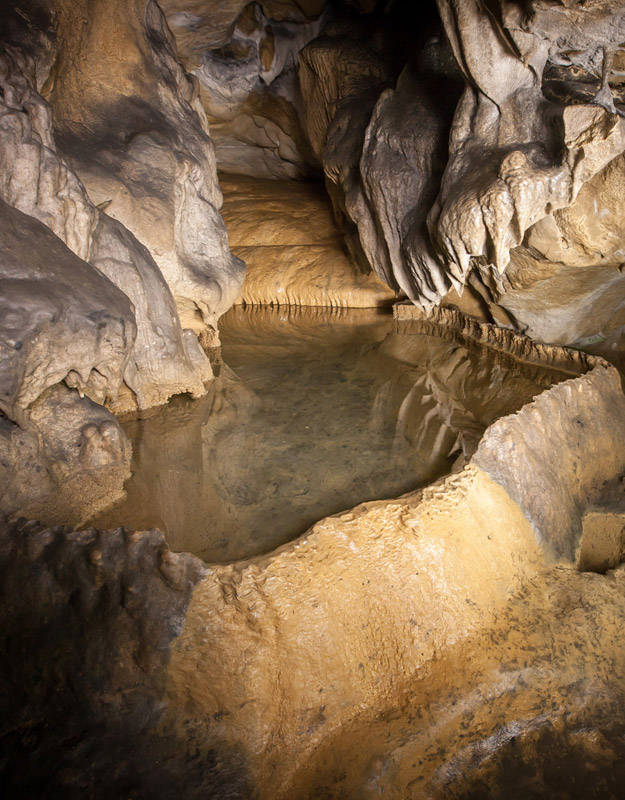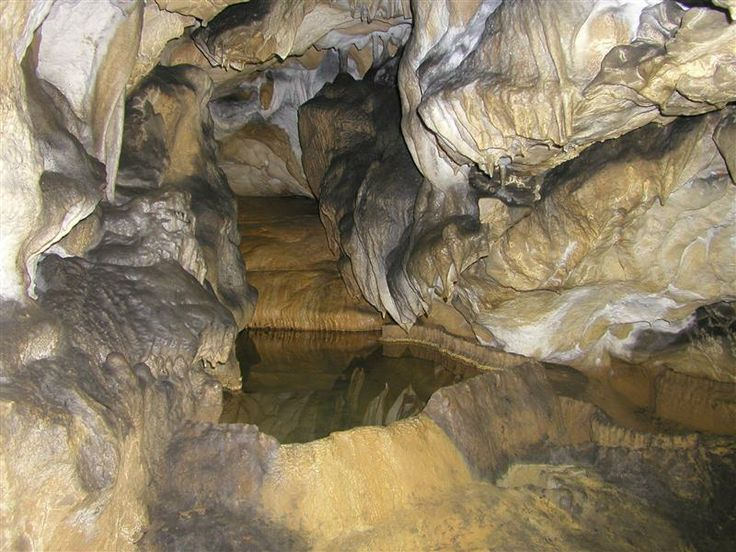Vrlovka Cave
Vrlovka Cave is a cave with several dripstone formations and a small cave river. The yellow formations are a speciality. Remains of animals and humans who sought refuge in the cave were discovered during excavations. Around 2500 BC, the Lasinje Culture produced famous finds. The cult vessel is on display in the Gradski muzej Karlovac in the form of a bi-conical flask, 9 cm high with white incrustations as ornament (Karlovac City Museum). The cave is a Natura 2000 site and a Geomorphological Nature Monument.
The cave was open as a show cave for a long time, although it has been closed for lengthier periods in recent years. Numerous species of bats use the cave for the most of the year, which is one of the reasons. In the winter, they hibernate, and in the summer, they roost. As a result of EU bat protection legislation, the cave is closed for much of the year. A recent study of bats in the Vrlovka Cave found that bats were present throughout the year, but that there were times when the cave's population was considerably reduced. This allows for infrequent visits without having a harmful impact on the bat population.
Location: Kamanje, Croatia















